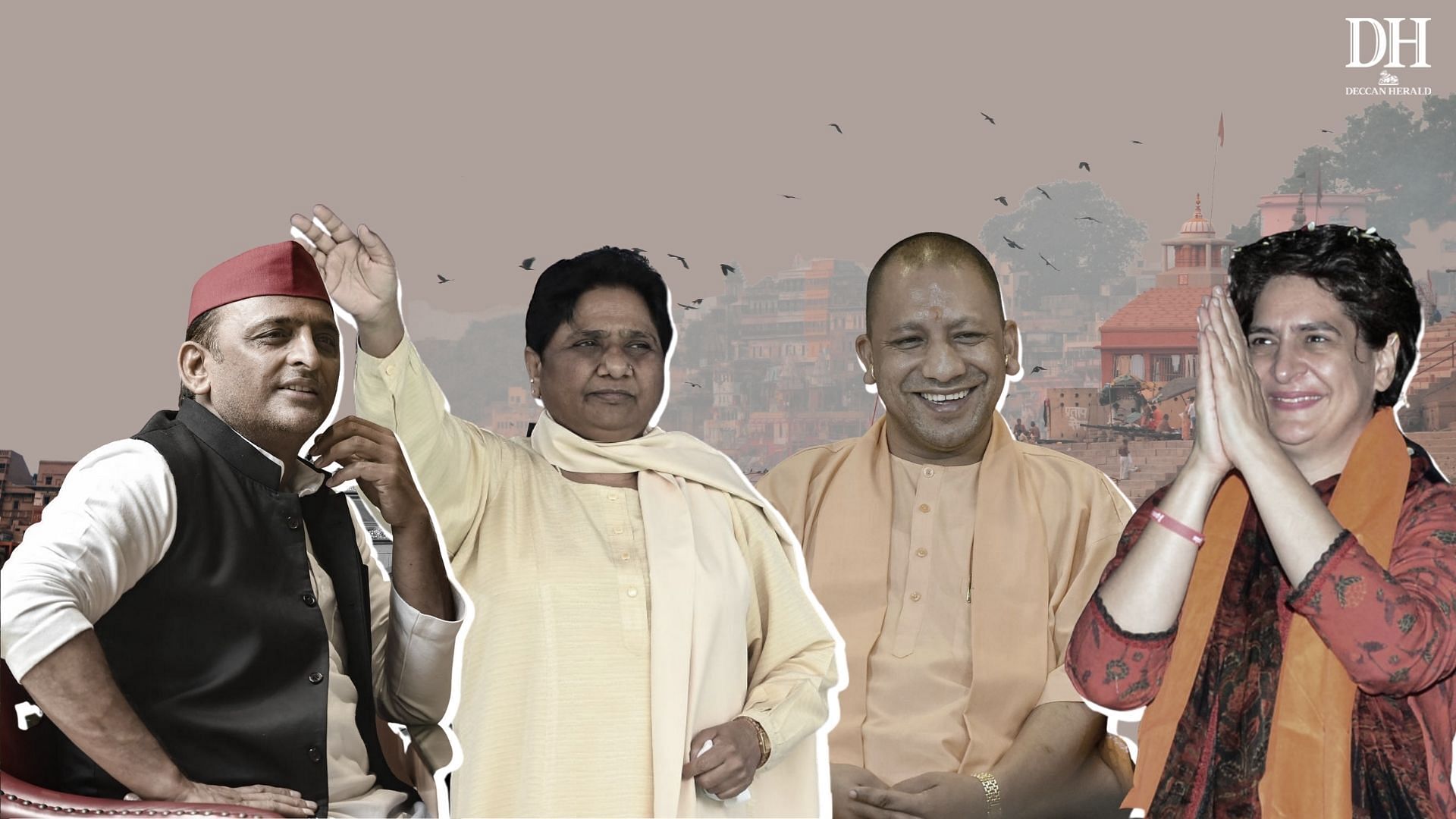
The 2022 Uttar Pradesh poll outcome will be remembered for Yogi Adityanath's record-breaking victory- as he becomes the first chief minister to win a second consecutive term after completing a full five years in office.
The results will also go down in the annals of history when the Samajwadi Party (SP) recorded its best-ever performance in UP elections romping home with 32 per cent votes.
The other big story of this election is the meltdown of the Bahujan Samaj Party (BSP), registering its worst performance in terms of vote-share since 1989. But those were formative years when within four years of its formation, the BSP could boast of having garnered close to 10 per cent votes.
Four years later, the party was in power in alliance with Mulayam Singh Yadav's SP, winning 11 per cent votes. By 1995, Mayawati had become the youngest and the first Dalit chief minister of UP.
The rise of the BSP in the country's political horizon was spectacular. In 2007, the BSP won a majority of its own with just over 30 per cent votes and 206 seats in a house of 403.
However, its fall after the rise of the BJP in UP after the 2014 elections has been equally precipitous. From 22.23 per cent votes in the 2017 elections, the party's vote share has fallen by almost 10 per cent to a shade below 13 per cent.
Where did the committed BSP voter go?
In terms of absolute numbers, UP has the highest percentage of Dalit votes. The 23 per cent of the electorate comprises about 12 to 13 per cent Jatavs. Smaller Dalit communities, such as Pasis, Valmikis, Khatiks, Gonds together make for the remaining 10 per cent.
Other parties, especially the BJP, have made a concerted effort to win over this 10 per cent over the last seven years. The party made tangible gains as some of these castes recoiled towards the BJP against the Jatav dominance in the BSP.
But this sub-13 per cent vote share by the BSP is indicative of a much more significant churn in the entire Dalit community of Uttar Pradesh. It indicates a serious breach in Mayawati's command over a community that has stuck with the party through thick and thin.
Take the case of the Budhana seat in the Muzaffarnagar district. The Rashtriya Lok Dal (RLD) has won this constituency by a fair margin. But the BSP candidate here has registered less than five per cent votes. In 2017, the BSP nominee on this seat polled more than 47,000 or just over 23 per cent of the total votes polled.
In the adjoining Charthawal seat, the BSP candidate, son of a former minister in UP, got just over 11 per cent votes when the last time the party polled more than 30,000 votes here.
Eight-time MLA from the Mant constituency in Mathura, Shyam Sunder Sharma, who has won from here even on the Trinamool Congress symbol, has lost this seat contesting as a BSP candidate this time around.
Aman Mani Tripathy, son of former UP minister Amar Mani Tripathy, has come a poor third from Nautanwa in Maharajgunj district on the BSP symbol. Tripathy junior won from here as an independent in the last polls.
In Varanasi South, the BJP has won by more than 10,000. The BSP candidate has polled less than one per cent of the votes polled. Yes, less than one per cent o a meagre 1848 votes.
A BSP candidate from Sultanpur district who has also served as a minister in the Mayawati government says, "It is beyond belief that even Jatav voters seemed to have shifted away from the party in large numbers."
"I can say with some confidence that in my constituency, more than 60,000 Jatavs polled. And as a BSP candidate, the total votes I have got is less than 40 thousand," he rued.
In Ambedkar Nagar, from where Mayawati has won the Lok Sabha polls on more than one occasion, the BSP has lost all five seats. This district on the borders of Purvanchal and Awadh has a very high concentration of Jatav votes.
Even in the last BJP wave in 2017, the BSP could retain three out of five seats in the district. All have gone to the Samajwadi Party this time around.
We return to the same point that we tried to raise right at the beginning of this piece- where did the BSP vote go?
In many constituencies, even the BSP candidates are surprised at the turn of events. "In one polling booth where I once used to get 80 dedicated party votes, I got only 8," a candidate said. "Someone in the village asked me where the votes went. I told them in a lighter vein that they were all swept away by free ration," he added.
The incremental vote that the SP seems to have weaned away from the BJP from the OBC sections seems to have been adequately compensated by a nearly 10 per cent shift of the BSP voters to the BJP. The BSP appeared to be holding on to its Jatav votes on the ground. However, the results show the attrition was much more widespread and profound.
The net result is that the BJP increased its vote share by a good couple of percentage points.
So, where does the BSP go from here? Will the new kids on the block, like the Azad Samaj Party, challenge Mayawati's grip over Dalit votes?
(Sumit Pande is a journalist)
Disclaimer: The views expressed above are the author's own. They do not necessarily reflect the views of DH.